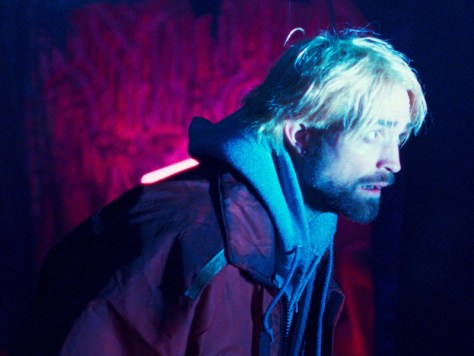
Film essayist Kogonada makes his feature debut as both a director and writer with this contemplative and quietly moving tale of two souls who converge during pivotal moments in their respective lives. One of those souls is the introverted Jin (John Cho), who is working in Korea as a literature translator when he receives the news that his estranged father has been hospitalized for an unexpected coma. Once he arrives in the titular Indiana city where his father resides, he is joined by his father’s devoted assistant Eleanor (Parker Posey) as they awkwardly catch up on each others’ lives while waiting for the coma to release its hold.
After talking on the phone one day, Jin meets the young bookworm Casey (Haley Lu Richardson) and the two open up to each other as they slowly saunter on opposite sides of a fence that separate Jin’s motel and the library where Casey works. We learn that she’s recently graduated high school and despite that fact that she seems very bright, she forgoes the opportunity of higher education and chooses instead to toil between the bookshelves with her work friend Gabriel (Rory Culkin). Over the course of their time together, Jin and Casey share several conversations that center around their shared interest of architecture (for which Columbus in both the film and real life is apparently renowned) but ultimately blossom out to larger life subjects.
With its walk-and-talk pacing and story of the encounter between an older man and a young woman, there are hints of Lost In Translation and Richard Linklater’s Before trilogy embedded within Columbus, although it’s not nearly as chatty as either of them. This is decidedly a more introspective meeting of the minds that is generally more patient in the way it allows its dialogue to unfold, though there are times it comes across as frustratingly sedate as a result. Still, the knowledge and wisdom that they impart to one another rings true to the characters and the actors bring plenty of understated charm to their reserved roles.
Richardson, who is something of a new name and face to me (I didn’t recognize her from the thriller Split earlier this year), gives a glowing and magnetic performance full of grace and warmth that establishes her as a major screen presence. This is a film that’s more about what isn’t said rather than what is said and she’s able to imbue the pauses in between Casey’s words with notes of longing and heartbreak that makes every sentence an emotional wellspring. Although it’s great to see a talented actor like Cho finally get a leading role, I do wish that his character was able to open up a bit more as his proclivity for stoicism got to be a bit tedious especially given the much more heartfelt nature of Richardson’s work.
Kogonada and his cinematographer Elisha Christian capture their Midwestern setting brimming with modernist marvels in an evocative and curious manner that perfectly mirrors the film’s quaint narrative. Beyond its focus on the grand architecture, they also take time to build out the small moments too; I was particularly fond of a sequence between Cho and Posey that’s framed entirely around a bedroom mirror in which we see the reflections of the two talking quietly and reminiscing on the past. Pensive and personal scenes like this characterize Columbus as something of a cinematic zen garden and a welcome respite from an increasingly chaotic world.


